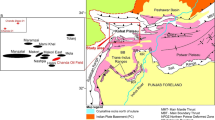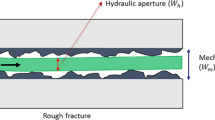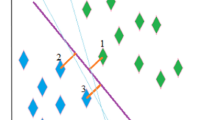Abstract
Characterization and estimation of physical properties are two of the most important key activities for successful exploration and exploitation in the petroleum industry. Pore-fluid pressures as well as estimating permeability, porosity, or fluid saturation are some of the important example of such activities. Due to various problems occurring during the measurements, e.g., incomplete logging, inappropriate data storage, or measurement errors, missing data maybe observed in recorded well logs. This unfortunate situation can be overcome by using soft computing approximation tools that will estimate the missing or incomplete data. Active learning method (ALM) is such a soft computing tool based on a recursive fuzzy modeling process meant to model multi-dimensional approximation problems. ALM breaks a multiple-input single-output system into some single-input single-output sub-systems and estimates the output by an interpolation. The heart of ALM is fuzzy measuring of the spread. In this paper, ALM is used to estimate missing logs in hydrocarbon reservoirs. The regression and normalized mean squared error (MSE) for estimating density log using ALM were equal to 0.9 and 0.042, respectively. The results, including errors and regression coefficients, proved that ALM was successful on processing the density estimation. ALM is illustrated by an example of a petroleum field in the NW Persian Gulf .
Access this chapter
Tax calculation will be finalised at checkout
Purchases are for personal use only
Similar content being viewed by others
References
Afrakoti IEP, Ghaffari A, Shouraki SB (2013) Effective partitioning of input domains for ALM algorithm. In: First Iranian conference on pattern recognition and image analysis (PRIA), 2013. IEEE
Bahrpeyma F, Golchin B, Cranganu C (2013) Fast fuzzy modeling method to estimate missing logs in hydrocarbon reservoirs. J Petrol Sci Eng 112:310–321
Cranganu C, Bautu E (2010) Using gene expression programming to estimate sonic log distributions based on the natural gamma ray and deep resistivity logs: a case study from the Anadarko Basin Oklahoma. J Petrol Sci Eng 70:243–255
Cranganu C, Breaban M (2013) Using support vector regression to estimate sonic log distributions: a case study from the Anadarko Basin, Oklahoma. J Petrol Sci Eng 103:1–13
El-Sebakhy EA, Asparouhov O, Abdulraheem AA, Al-Majed AA, Wu D, Latinski K, Raharja I (2012) Functional networks as a new data mining predictive paradigm to predict permeability in a carbonate reservoir. Expert Syst Appl 39(12):10359–10375
Jack PCK (1983) Cross-validation using the t statistic. Eur J Oper Res 13(2):133–141
Jiang Y, Zur RM, Pesce LL, Drukker K (2009) A study of the effect of noise injection on the training of artificial neural networks. In: International joint conference on neural networks, 2009 (IJCNN 2009). IEEE, pp 1428–1432
Liu Y, Starzyk JA, Zhu Z (2008) Optimized approximation algorithm in neural networks without overfitting. IEEE Trans Neural Networks 19(6):983–995
Mori M, Stephen J (1991) A note on generalized cross-validation with replicates. Stoch Process Appl 38(1):157–165
Murakami M, Honda N (2004) Hardware for a new fuzzy-based modeling system and its redundancy. In: 23rd international conference of the North American fuzzy information processing society (NAFIPS‘04), pp 599–604
Murakami M, Honda N (2005) A comparative study of the IDS method and feedforward neural networks. In: International joint conference on neural networks, Montreal, Canada
Murakami M, Honda N (2006) Model accuracy of the IDS method for three-input systems and a basic constructive algorithm for structural optimization. In: International joint conference on neural networks, 2006 (IJCNN‘06). IEEE, pp 2900–2906
Rezaee MR, Kadkhodaie-Ilkhchi A, Alizadeh PM (2008) Intelligent approaches for the synthesis of petrophysical logs. J Geophys Eng 5:12–26
Rider M (2002) The geological interpretation of well logs. Whittles Publishing, Malta
Rynkiewicz J (2012) General bound of overfitting for MLP regression models. Neurocomputing 90:106–110
Saeed Bagheri S, Honda N (1997a) A new method for establishment and saving fuzzy membership functions. In: 13th fuzzy symposium, Toyama, Japan, pp 91–94
Saeed Bagheri S, Honda N (1997b) Outlines of a living structure based on biological neurons for simulating the active learning method. In: 7th intelligent systems symposium, pp 183–188
Saeed Bagheri S, Honda N (1999) Recursive fuzzy modeling based on fuzzy interpolation. J Adv Comput Intell 3:114–125
Sagha H, Shouraki SB, Beigy H, Khasteh H, Enayati E (2008) Genetic ink drop spread. In: Second international symposium on intelligent information technology application, 2008 (IITA‘08), vol 2, pp 603–607
Saramet M, Gavrilescu G, Cranganu C (2008) Quantitative estimation of expelled fluids from Oligocene rocks, Histria Basin, Western Black Sea. Mar Pet Geol 25(6):544–552
Schittenkopf C, Deco G, Brauer W (1997) Two strategies to avoid overfitting in feedforward networks. Neural Networks 10:505–516
Taheri-Shahriyani H et al (2006) Investigating the ability of active learning method for chlorophyll and pigment retrieval in case-I waters using seawifs wavelengths. Int J Remote Sens 28(20):4677–4683
Taheri-Shahraiyni H et al (2007) Application of the active learning method for the estimation of geophysical variables in the Caspian Sea from satellite ocean colour observations. Int J Remote Sens 28(20):4677–4683
Taheri-Shahraiyni H, Mohammad RG, Bagheri-Shouraki S, Saghafian B (2011) A new fuzzy modeling method for the runoff simulation in the Karoon Basin. Int J Water Resour Arid Environ 1(6):440–449
Takagi T, Sugeno M (1985) Identification of systems and its application to modeling and control. IEEE Trans Syst Man Cybern 15(1):116–132
Author information
Authors and Affiliations
Corresponding author
Editor information
Editors and Affiliations
Rights and permissions
Copyright information
© 2015 Springer International Publishing Switzerland
About this chapter
Cite this chapter
Bahrpeyma, F., Cranganu, C., Dadaneh, B.Z. (2015). Active Learning Method for Estimating Missing Logs in Hydrocarbon Reservoirs. In: Cranganu, C., Luchian, H., Breaban, M. (eds) Artificial Intelligent Approaches in Petroleum Geosciences. Springer, Cham. https://doi.org/10.1007/978-3-319-16531-8_7
Download citation
DOI: https://doi.org/10.1007/978-3-319-16531-8_7
Published:
Publisher Name: Springer, Cham
Print ISBN: 978-3-319-16530-1
Online ISBN: 978-3-319-16531-8
eBook Packages: EnergyEnergy (R0)




